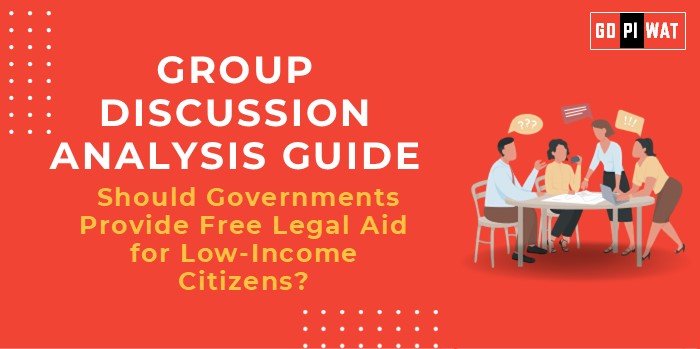📋 Should Governments Provide Free Legal Aid for Low-Income Citizens?
🌐 Introduction to the Topic
Context: Access to justice is a cornerstone of any democratic society. Yet, high legal costs often prevent low-income citizens from pursuing or defending their legal rights, leading to systemic inequality.
Background: Globally, free legal aid programs exist in various forms. They aim to reduce disparities in justice delivery by enabling equal access to legal services regardless of income.
📊 Quick Facts and Key Statistics
- 🌍 Global Legal Aid Coverage: Only 28% of low-income countries provide basic free legal aid services.
- 🇮🇳 India: Over 80% of cases in lower courts are delayed due to lack of legal representation (National Legal Services Authority, 2023).
- 🌟 UN Development Goal: SDG 16 emphasizes access to justice for all.
- 🇺🇸 US Public Defender Funding: Only 2% of state budgets are allocated to public legal defense, leading to resource gaps.
👥 Stakeholders and Their Roles
- 🏛️ Government Agencies: Formulate policies, allocate budgets, and provide frameworks for public legal aid.
- 📢 Legal Aid Organizations: Deliver services to underserved populations.
- 🤝 Civil Society: Advocate for legal reforms and create awareness about free legal aid.
- 👨👩👧👦 Citizens: Demand accountability and equitable justice.
📚 Achievements and Challenges
Achievements:
- ✨ Increased Legal Awareness: Initiatives like India’s Lok Adalats resolve millions of cases annually.
- 🌍 International Success: Scandinavian countries demonstrate how robust public defense systems lead to fair trials.
- 🤝 Community Impact: Local initiatives empower marginalized groups, such as tribal or rural populations.
Challenges:
- 💰 Insufficient Funding: Limited budgets hamper service quality.
- ⚖️ Quality Disparities: Public defenders often lack training and face heavy workloads.
- 🌏 Global Comparison: Nations like Japan employ highly qualified legal aid lawyers, while others struggle with under-qualified defenders.
🗨️ Structured Arguments for Discussion
- ✅ Supporting Stance: “Free legal aid bridges socio-economic disparities, ensuring justice is accessible to all.”
- ❌ Opposing Stance: “Without adequate funding, free legal aid programs often become inefficient and counterproductive.”
- ⚖️ Balanced Perspective: “Free legal aid is essential but must be supported by reforms in funding, training, and resource allocation.”
🌟 Effective Discussion Approaches
- 💡 Opening Approaches:
- 📊 Start with Data: “Only 28% of low-income nations provide adequate legal aid…”
- 📘 Case Study Opening: Reference the success of Scandinavian free legal aid systems.
- 💬 Counter-Argument Handling:
- Acknowledge inefficiencies and propose targeted reforms, such as increasing budgets and enhancing defender training.
📈 Strategic Analysis of Strengths and Weaknesses
- ✅ Strengths:
- Promotes equality in justice.
- Improves judicial efficiency by reducing delays.
- ⚠️ Weaknesses:
- Overburdened legal aid lawyers.
- Potential misuse by non-deserving clients.
- 🌟 Opportunities:
- Integration of technology, such as AI-based case management.
- Public-private partnerships to boost funding.
- ⚡ Threats:
- Corruption and resource diversion.
🎓 Connecting with B-School Applications
- 🌍 Real-World Applications: Explore intersections with corporate social responsibility (CSR) or public policy.
- 💬 Sample Interview Questions:
- “How can technology enhance free legal aid?”
- “Is free legal aid economically sustainable?”
- 📘 Insights for Students:
- Emphasize the role of leadership in ensuring equitable resource allocation.
- Leverage technology to drive innovative solutions for societal challenges.


